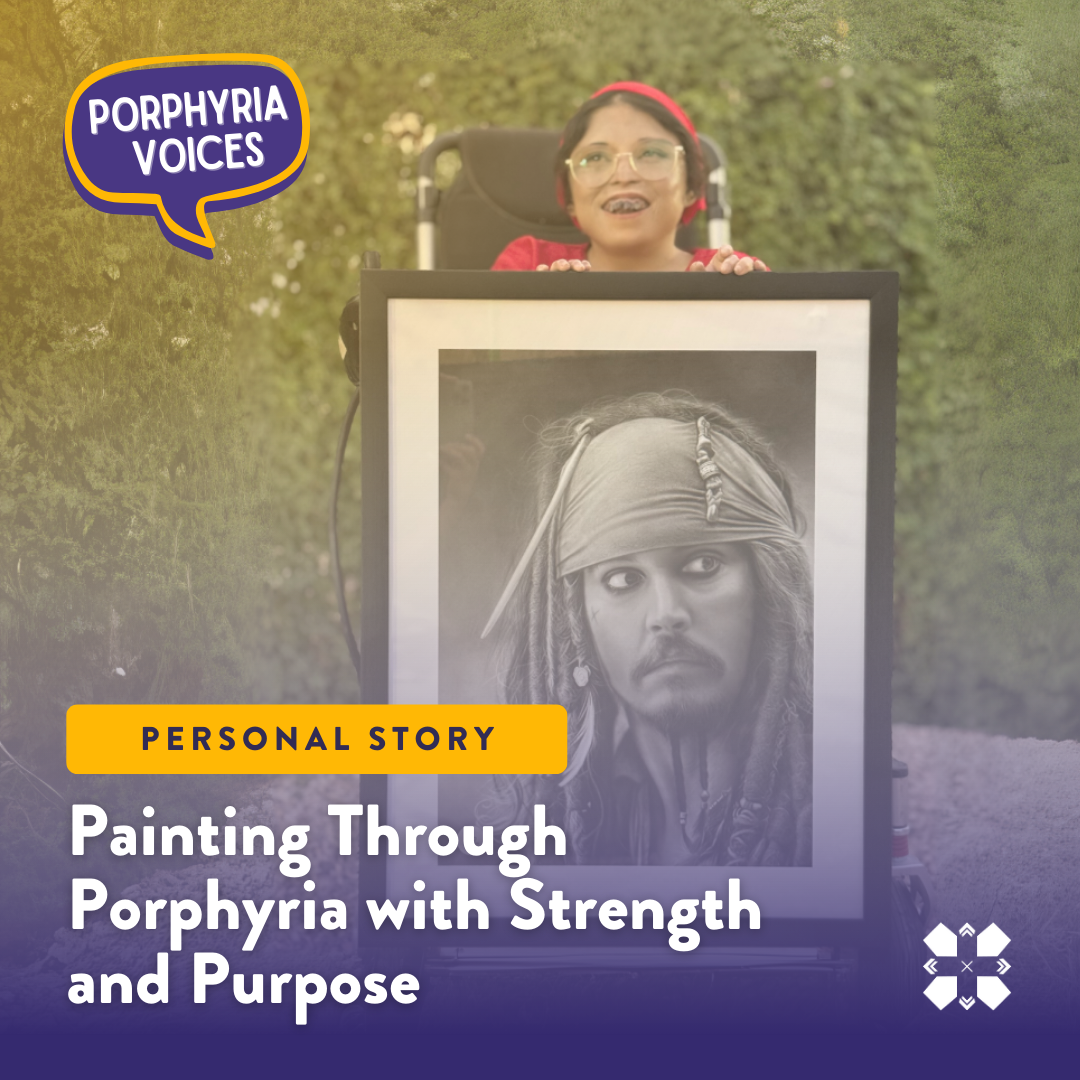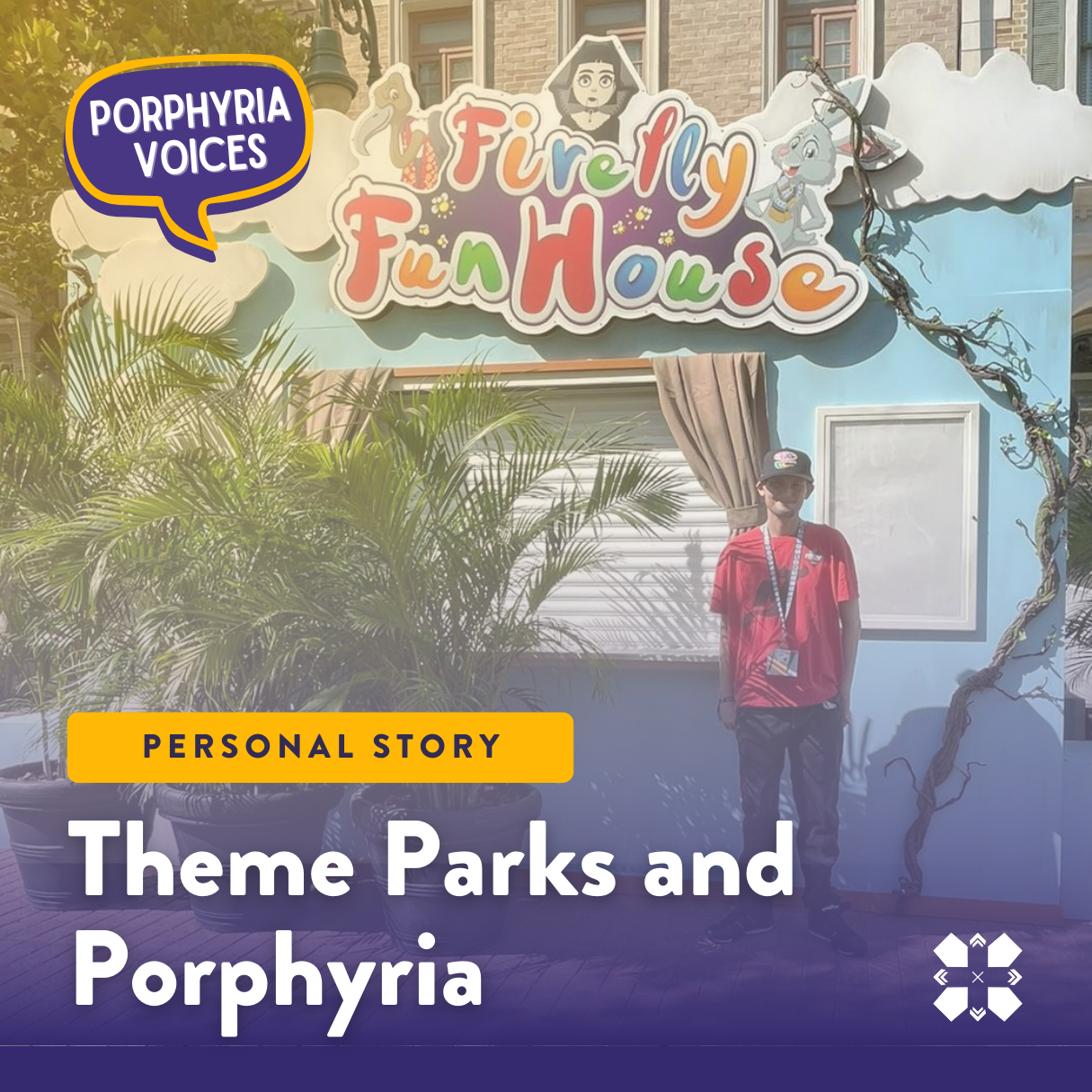Safe Summer Travel with Cutaneous Porphyria: Sun-Avoidance Strategies That Work
Porphyria Voices shares experiences, insights, and advice from the porphyria community. Discover valuable knowledge, foster connections, and join us in raising awareness to empower and unite our porphyria family.
By Candace Colbert, Ginger Zona, Jennifer Beck & Erin Janiak
Curated by Katrina Parra
For people living with cutaneous porphyrias - including Porphyria Cutanea Tarda (PCT), Erythropoietic Protoporphyria (EPP), Congenital Erythropoietic Porphyria (CEP), Variegate Porphyria (VP), X-Linked Protoporphyria (XLP), Hereditary Coproporphyria (HCP), and Hepatoerythropoietic Porphyria (HEP) - light exposure can trigger painful symptoms ranging from blistering skin to burning sensations. While each type has unique characteristics, they all require careful light management during travel.
This guide combines medical understanding with real patient wisdom to help you vacation safely.
“My family has enjoyed camping in the deep woods. My husband would still string up tarps to give me more shade.”
-Jennifer Beck, EPP patient.
Transportation Tips from Experienced Travelers
Navigating different modes of transportation requires special consideration. Candace Colbert (EPP) shares her proven methods:
"When flying, I always check the flight path and sun position to select seats on the shaded side of the plane. For road trips, I keep opaque blankets in the car to cover windows and don't hesitate to switch seats if the sun changes position - sometimes moving to the back seat makes all the difference."
Key transportation strategies:
For flights: Research sun position and choose seats accordingly
For cars: Bring window covers and be willing to change seats
For trains/buses: Opt for aisle seats away from windows
Erin Janiak on vacation with her umbrella protecting herself from the sun.
The Protective Clothing Essentials
Our patients have identified the most effective protective garments through trial and error. Candace explains:
"I test all clothing by holding it up to light - if I can see through it, it won't protect me. My travel uniform usually includes thick denim jeans, a jean jacket, and leather accessories. For my face, I use a winter bandana made by Skida that covers my nose and mouth completely."
Ginger Zona (EPP) adds:
"My game-changer has been the Coolibar hat with detachable face shield. The wired top molds to my nose, it's packable, and I can wear sunglasses underneath without fogging."
Erin Janiak (EPP) offers valuable supplemental advice that builds on our previous recommendations:
"To reiterate, EPPers suffer from visible light. While UV protection matters, visible light is our real enemy! As Candace said, denim works because it blocks light completely. Some mineral sunscreens might help slightly since they create a physical barrier, but most don't block visible light - you can still see your skin through them!"
Activity Planning & Timing Strategies
Jennifer Beck (EPP) suggests creative approaches to sightseeing:
"My family enjoys adapted adventures like camping in deep woods with extra tarps for complete shade, or urban trips focused on museums and indoor entertainment. Even simple choices matter - I always walk on the shady side of the street in cities."
Erin recommends:
"Schedule activities for when protection works best - dense shade for daytime, open-air for nights."
Important timing considerations:
Schedule outdoor activities for early morning/late afternoon
Build in rest periods during peak sunlight hours
Research shaded routes at your destination
Dining & Break-Time Precautions
Meal times require special attention, as Candace explains:
"I always choose indoor seating away from windows. That moment when you lower your face protection to eat is surprisingly risky - the light exposure adds up."
Additional food-related tips:
Pack safe snacks to avoid unplanned light exposure
Research restaurant options with indoor seating beforehand
Consider meal timing as part of your "sun swapping" strategy (enjoying early mornings and evenings outside while resting indoors at midday)
Light Protection & Porphyria Webinar with porphyria expert Amy Dickey.
Destination Selection Insights
Choosing the right location makes a significant difference. Candace notes:
"Those extra daylight hours in northern destinations can actually reduce your safe window for being outside."
Jennifer offers alternative vacation ideas:
"We've discovered wonderful alternatives - indoor water parks, evening concerts, even bowling alleys can create vacation memories."
Erin emphasizes important nuances about destinations:
"Light reflects powerfully off water - even in shade at lakes, pools or beaches. Wooded hikes are ideal as trees provide natural protection, while night markets and festivals let you enjoy outdoor culture safely. Always plan cool, dark 'escape spots' for daytime relief."
The Power of Adaptation
Our patients emphasize that creativity opens possibilities. Ginger shares:
"With my face shield and careful timing, I can enjoy short outdoor periods when needed. It's about balancing protection with living fully."
Key adaptive principles:
Test new strategies in low-risk situations first
Combine multiple protective methods
Remain flexible to adjust plans as needed
Patient with cutaneous porphyria wearing protective clothing at Sun Escape Weekend.
Final Tips from Our Community
Candace's parting advice:
"Sun swapping - enjoying early mornings and evenings outside while resting indoors at midday - has been my most successful strategy. And always, always keep your protective gear handy, even on cloudy days when the risk seems low."
Remember:
Every patient's sensitivity differs
Gradual testing of new strategies helps
Peer support provides practical insights
For personalized trip planning advice, consider connecting with one of our experienced patient ambassadors who can share specific tips tailored to your destination and porphyria type.
Katrina Parra is the Director of Community Engagement at the United Porphyrias Association. Living with Acute Intermittent Porphyria herself, Katrina is dedicated to raising awareness and providing support for those affected by rare diseases. Through her work, she strives to build strong connections within the porphyria community, sharing her personal experiences and empowering others to navigate their journey with strength and solidarity.
Have knowledge or experiences to share with Porphyria Voices?
Reach out and pitch your idea—we’d love to feature your unique perspective!











